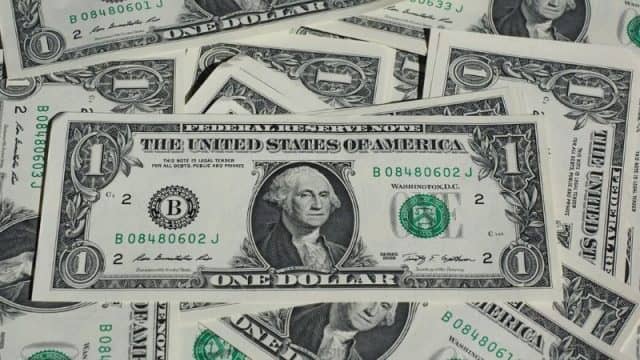Advertiser Disclosure
What’s the Difference Between Subsidized and Unsubsidized Loans?
Updated On January 21, 2022
Editorial Note: This content is based solely on the author's opinions and is not provided, approved, endorsed or reviewed by any financial institution or partner.

When you pay for school with federal student loans, the loans are either Direct Subsidized Loans or Direct Unsubsidized Loans. What’s the difference between Subsidized and Unsubsidized Student Loans?
Subsidized loans do not accrue interest while you’re in school, and the federal government pays any interest on your behalf. In contrast, unsubsidized loans accrue interest while you’re in school. Therefore, if you qualify, you can save more money with subsidized student loans than with unsubsidized loans.
Top Picks For Student Loan Refinancing
April 2024
View Details
Overview
Details
View Details
Overview
Details
View Details
Overview
Details
View Details
Overview
Details
View Details
Overview
Details
View Details
Overview
Details
View Details
Overview
Details
View Details
Overview
Details
Disclosures: SoFi | Earnest | NaviRefi | ELFI | Splash Financial | Citizens | Laurel Road | LendKey
In this guide, we will discuss:
- What is a Direct Subsidized Loan?
- What is a Direct Unsubsidized Loan?
- What’s the difference between subsidized and unsubsidized loans?
- How much can you borrow for subsidized vs. unsubsidized loans?
- How interest accrues on subsidized and unsubsidized loans
- How to get subsidized and unsubsidized loans
What is a Direct Subsidized Loan?
Direct Subsidized Loans are federal student loans that do not accrue interest while you’re in school because the federal government pays the interest for you. Subsidized loan are available to undergraduate students with financial need. Your school determines the amount of subsidized loans that you can borrow based on your financial need.
For subsidized student loans, the U.S. Department of Education will pay the interest on a Direct Subsidized Loan:
- When you are enrolled in school at least half-time;
- For a “grace period” of six months after you leave school; and
- When you defer, or postpone, student loan payments
For example, let’s assume you borrow $10,000 of subsidized student loans during school. When you graduate, you will owe $10,000 of subsidized loans. This is because no interest is added to your loan balance while you’re in school and for six months after during your grace period. Once your grace period ends, you will start to make payments and will owe interest.
Direct Subsidized Loans: Advantages
- The U.S. Department of Education pays the interest on your loans so long as you’re enrolled half-time and have financial need.
- No payments are due until six months after graduation or after your leave school.
- The federal government pays your interest during forbearance and deferment.
Direct Subsidized Loans: Disadvantages
- You have to demonstrate financial need.
- Annual loan limits are lower compared to unsubsidized loans.
- You must be an undergraduate to qualify.
What is a Direct Unsubsidized Loan?
Direct Subsidized Loans are available to both college and graduate students, and interest accrues while you’re in school and during grace periods. You don’t have to demonstrate financial need, and your school determines how much you can borrow based on the cost of attendance and the amount of financial need that you receive.
If you choose not to pay the interest while you’re in school, during grace, forbearance or deferment periods, then your interest will be capitalized, meaning that your interest will be added to your principal balance.
Direct Unsubsidized Loans: Advantages
- Both undergraduate and graduate students can receive Direct Unsubsidized Loans.
- You don’t have to demonstrate financial need to qualify.
- You can borrow higher loan limits compared with Direct Subsidized Loans.
Direct Unsubsidized Loans: Disadvantages
- You have to pay interest during school, grace periods, and during forbearance and deferment.
What’s the difference between subsidized and unsubsidized loans?
Subsidized and unsubsidized loans are both student loans that are issued by the federal government. However, there are critical differences that could impact how you borrow for college and graduate school.
| Subsidized | Unsubsidized | |
|---|---|---|
| Who can borrow | Undergraduate students | Undergraduate and graduate (and professional)degree students |
| How to qualify | Must demonstrate financial need | Financial need is not required |
| How much you can borrow | Lower loan limits compared to unsubsidized loans | Higher loan limits compared to subsidized loans |
| Does interest accrue in school? | No | Yes |
| Does interest accrue during the grace period? | No | Yes |
Here are the primary differences between subsidized loans and unsubsidized loans:
How much can you borrow for subsidized vs. unsubsidized loans?
Your school will determine how much of subsidized and unsubsidized student loans that you can borrow each academic year.
Both subsidized and unsubsidized loans have annual loan limits and annual aggregate limits. The amount you can borrow each year may be limited by your year in school and whether you are considered dependent or independent for tax purposes.
| Dependent Students | Independent Students | |
|---|---|---|
| Undergrad: 1st Year | $5,500 (up to $3,500 may be subsidized loans) | $9,500 (up to $3,500 may be subsidized loans) |
| Undergrad: 2nd Year | $6,500 (up to $4,500 may be subsidized loans) | $10,500 (up to $4,500 may be subsidized loans |
| Undergrad: 3rd Year | $7,500 (up to $5,500 may be subsidized loans) | $12,500 (up to $5,500 may be subsidized loans) |
| Undergrad: 4th Year | $7,500 (up to $5,500 may be subsidized loans) | $12,500 (up to $5,500 may be subsidized loans) |
| Graduate or Professional | N/A | Yes $20,500 (all unsubsidized) |
| Aggregate Limit | $31,000 (up to $23,000 may be subsidized loans) | Undergrads: $57,500 (up to $23,000 may be subsidized loans) Graduate/Professional: $138,500 (up to $65,500 may be subsidized loans) |
How interest accrues on subsidized and unsubsidized loans
Interest of your subsidized and unsubsidized loans accrues differently depending if you are in school, in a grace period, or in deferment.
Here is how interest accrues on subsidized and unsubsidized student loans:
| Subsidized | Unsubsidized | |
|---|---|---|
| In School | Interest paid by federal government | Interest accrues starting when loan is disbursed |
| Grace Period | Interest paid for six months after graduation or after you leave school | No payment is due for six months after you graduate or leave school, but interest will accrue and be added to your loan balance |
| Deferment | You can pause payments temporarily, and the federal government pays the interest | Interest accrues while payments are paused and is added to your loan balance |
How to get subsidized and unsubsidized loans
The best way how to get subsidized and unsubsidized student loans is to complete the FAFSA, or the Free Application for Federal Student Aid. This is the form that the federal government, states, colleges and universities use to award financial aid.The FAFSA is free to complete and is required to borrow federal student loans, including subsidized and unsubsidized loans.
If you qualify, you want to borrow the maximum amount of subsidized loans before you borrow unsubsidized loans because the federal government will pay the interest for you while you’re in school, a grace period or deferment. Maximize your scholarships and grants as well. If you need additional funds to pay for school, private student loans are another option. If you don’t have a credit history, you can apply with a qualified cosigner.
A qualified cosigner with good to excellent credit and stable income may help you get approved for a private student loan and receive a lower interest rate. Private student loans are different from federal student loans, so make sure to compare lenders, interest rates and loan terms before borrowing. Often, private student loans have lower interest rates than federal student loans, including compared to PLUS Loans.









